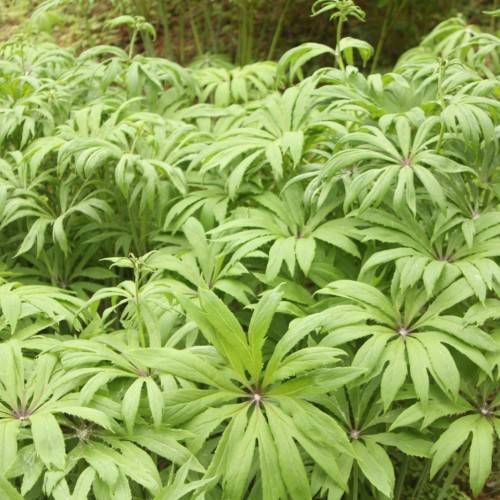
syneilesis
Syneilesis palmata
Cycle:
Herbaceous Perennial
Watering:
Average
Hardiness Zone:
5 - 8
Flowers:
Flowers
Sun:
Full sun,part shade
Leaf:
Yes
Growth Rate:
Low
Maintenance:
Low
Drought Tolerant:
Yes
Salt Tolerant:
Yes
Care Level:
Medium
watering
Syneilesis palmata is a shade-loving group of perennial ferns that do not need a lot of water. It prefers moist soil and humus-rich soil, but it is not necessary to overwater it. Water your Syneilesis palmata once a week, but make sure the soil is dry before you water it again. Too much water can cause the plant’s roots to rot and can also lead to fungal diseases. Water the plant near the base of the plant and avoid getting the foliage wet. It can also be beneficial to mist the leaves of the plant once or twice a week for additional humidity.
sunlight
Syneilesis palmata is typically exposed to between 3 and 8 hours of direct sunlight per day, depending on the season and its location. During the winter, being further from the equator, it will receive less direct sunlight than during the summer, when it is closer to the equator. It is important to note that too much direct sunlight can cause sunburns or bleaching on the plant's leaves. Thus, it is best to keep it in a location that has some shade throughout the day, such as near a window, or in the indirect light of a covered patio. Additionally, when planting it outdoors, make sure it is placed in a spot that has enough sun during the day, but is protected from strong wind or extreme temperatures.
pruning
Syneilesis palmata, also known as umbrella palm, should be pruned twice per year - once in late winter right before or as the new growth starts, and again during fall just before winter sets in. Before pruning, make sure to sterilize the tools with rubbing alcohol to avoid spreading any diseases. When performing the winter pruning, remove any dead or damaged foliage, then trim the plant to shape. This will help encourage new growth and make the plant look more full and healthy. The fall pruning is more severe - thin out up to 1/3 of the older foliage to make room for the growing tips. This will allow the plant to take in more light and air, and will ensure it looks its best throughout the winter months.
